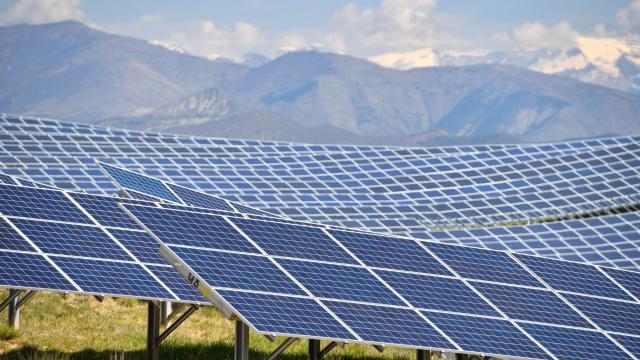Sure, things may look pretty grim when it comes to the climate. But new data and forecasts from the International Energy Agency suggest we’re at least not going backward — and renewable energy growth is set to accelerate.
Am IEA report released Wednesday found 2021 is on track to set a record for new renewable energy capacity additions. The estimated 290 gigawatts of renewable capacity the IEA expects will be commissioned will far surpass the previous record set just last year.
The report’s forecast for the next five years suggests renewable energy capacity will ramp up even further over the next half-decade. Renewable energy is expected to account for 95% of the increase in global power capacity through 2026, with solar playing an outsized role. Aggressive new climate goals and renewed government interest in climate policy mean the amount of renewable capacity added over the next five years could be 50% higher than that added from 2015 to 2020.
All of this positive news comes despite rising costs across the board associated with the global supply chain crunch. Though those constraints have not seemed to thwart renewable additions so far, the agency warned a continued increase in commodity prices could wipe out cost reductions made in solar over the past three years and result in wind energy investments shooting back up to levels not seen since 2015 to meet burgeoning demand.
Here are six charts from the report for a glimpse of the state of renewable energy capacity over the next five years — and a reminder that even though we’re on the right track, we need to go down that road even faster to avert even worse impacts of climate change.
Solar Solidifies Its Role as the Leading Renewable
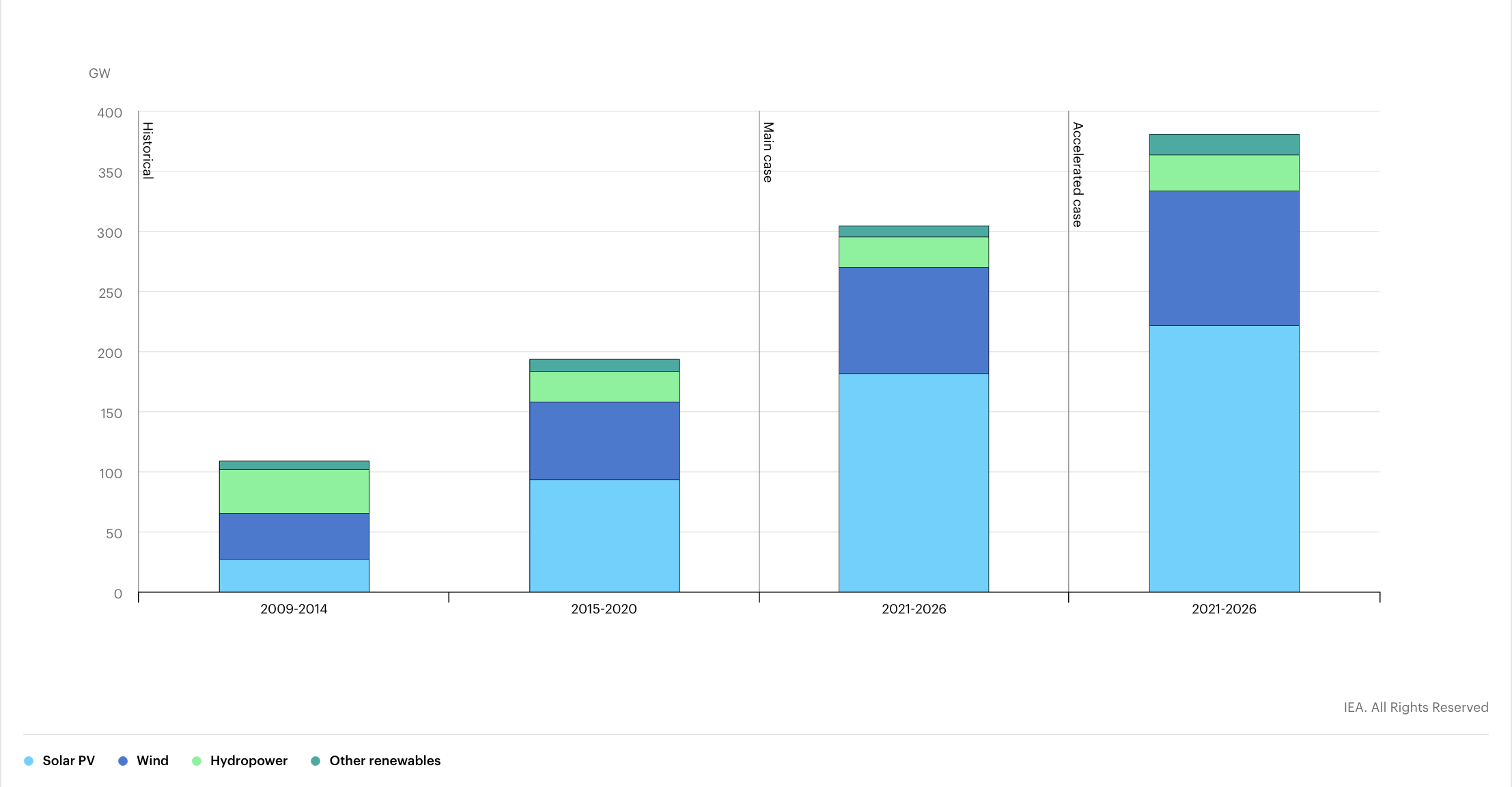
Solar energy capacity has made huge gains over the past two decades. The IEA forecast indicates that it will keep making those gains and have more than double the capacity of the next leading renewable over the course of the next five years globally. This projected solar dominance comes despite recent increases in solar energy prices brought on by the supply chain crunch.
Solar is expected to see 181 gigawatts of capacity growth between 2021 and 2026. For a point of reference, the 109 gigawatts of solar capacity in the U.S. can power 18.9 million homes, according to industry data. Wind, the next highest renewable, for comparison is expected to see 89 gigawatts of capacity growth during that same time period.
The U.S. Will Rapidly Grow Its Renewable Energy Capacity
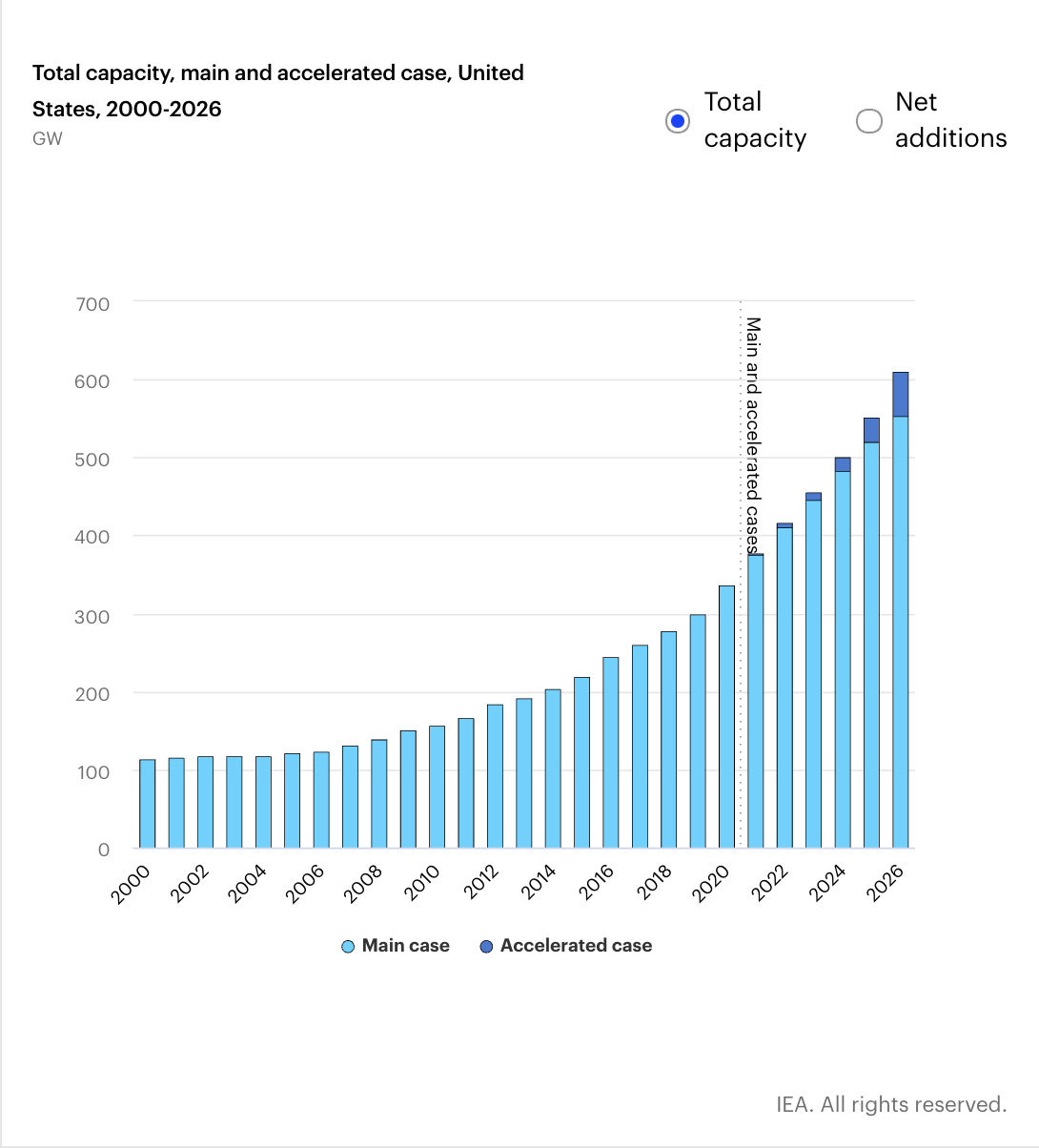
According to the report the U.S.’s total renewable capacity could reach 375 gigawatts by the end of 2021 and continually increase until it reaches 554 gigawatts by 2026. A number of policies are on the table for the U.S. to get there, with the Biden administration making a big push. President Joe Biden has set ambitious clean energy goals, including getting the U.S. on course for 30 gigawatts of offshore wind by 2030 and committing the country to an entirely decarbonized grid by 2035.
The House recently passed the Build Back Better Act that, if made law, would represent the first major climate change legislation passed since 2009. Among other things, the Build Back Better Act includes $US105 (A$148) billion towards bolstering climate change resilience and $US110 (A$155) billion to improve U.S. renewable energy technology supply chains.
Renewable Capacity Will See Incremental, But Steady Growth Worldwide
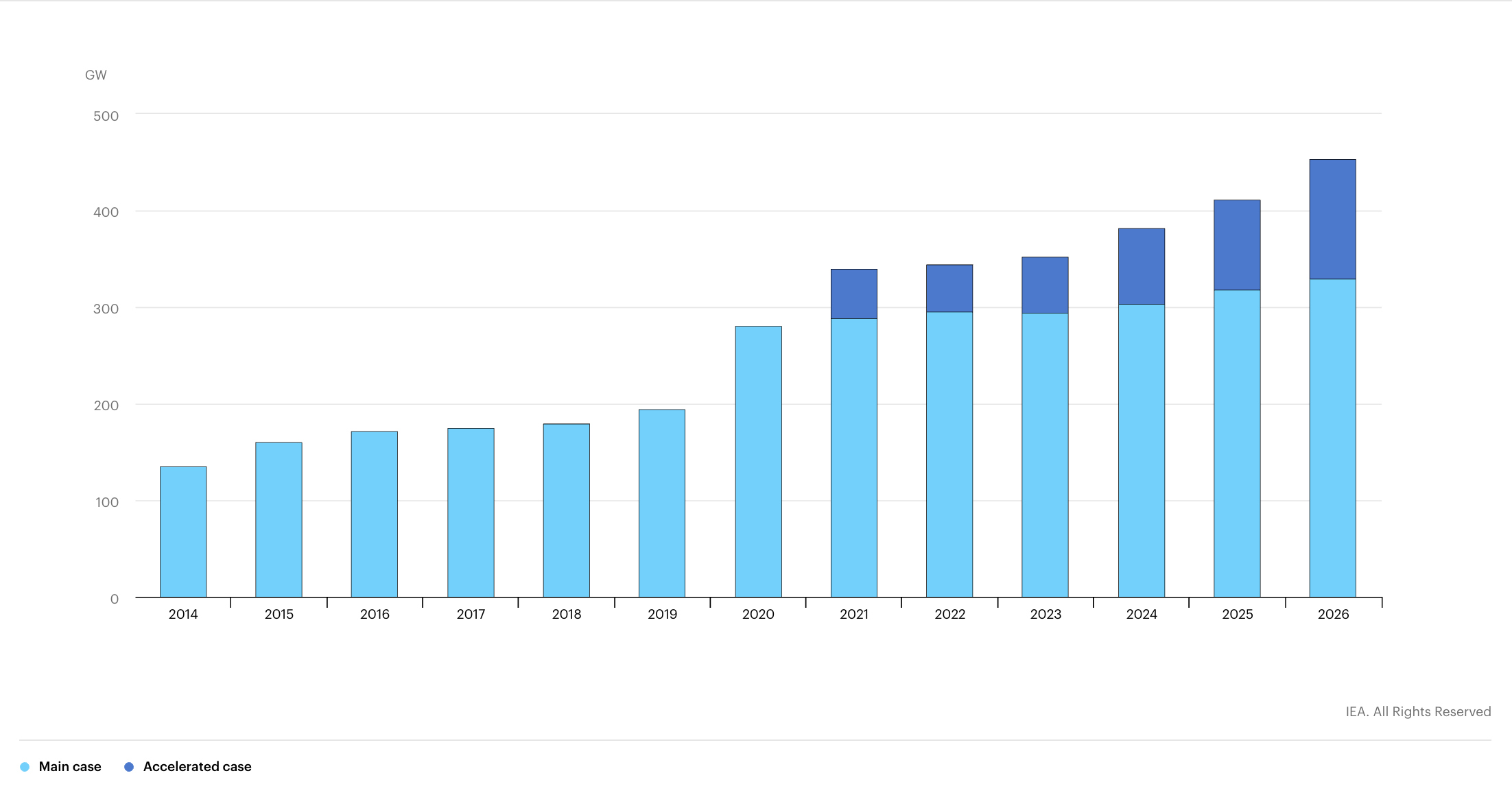
Renewable energy capacity saw huge relative gains between 2019 and 2020, increasing from 194 gigawatts to 280 gigawatts in a single year. IEA expects more modest, but consistent growth in the coming years.
China Leading the Charge
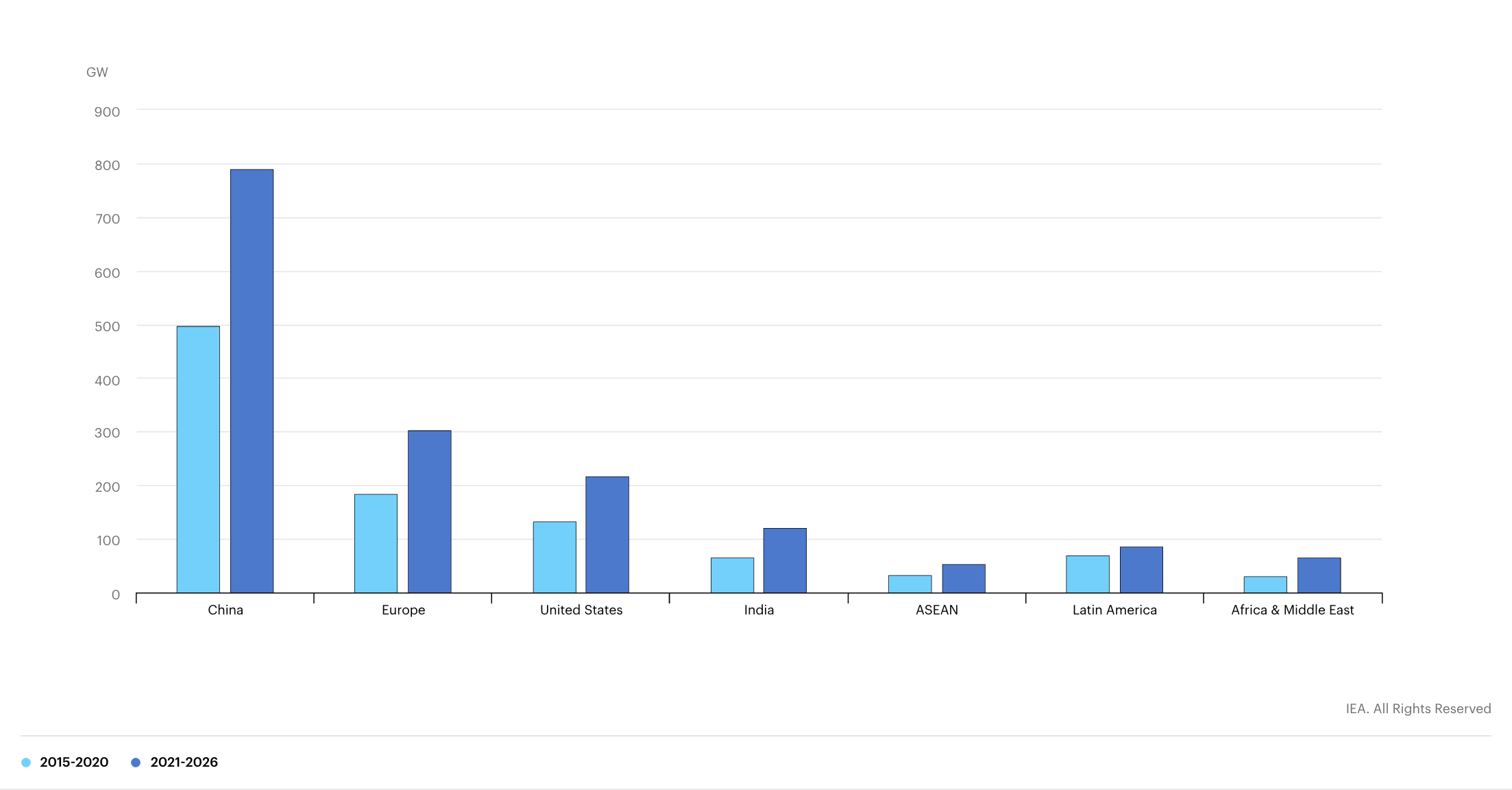
China is currently the world’s biggest carbon polluter and was responsible for around 27% of the world’s greenhouse gas emissions in 2019. But the country also has a huge lead in the renewable energy race, and it’s set to expand its role as the undisputed international heavyweight when it comes to zero-carbon capacity.
According to the IEA, China could add 791 gigawatts of renewable capacity between 2021 and 2026. That figure eclipses the EU, the U.S., and India — the next three biggest installers of renewable energy capacity — combined over that same timeframe.
Even Optimistic Capacity Additions Aren’t Enough

Countries around the world are making some meaningful inroads and investments in renewable energy, but even the best-estimated cases fall far short of the capacity needed for a net zero scenario. The IEA expects 294 gigawatts of average annual renewable capacity additions between 2021 and 2026.
That figure jumps up to 381 gigawatts in its “accelerated” case, which would occur if major policy and regulatory challenges were addressed in the next year or two. But even that still falls below the 548 gigawatts of annual average capacity additions needed for the world to be on track for a world that reaches net zero emissions by 2050. That goal is what’s needed to have a decent shot at limiting global warming to 1.5 degrees Celsius, a target policymakers have deemed a relatively safe level of heating.
A big part of reaching that goal isn’t just installing more renewables; it’s also ending fossil fuel use. Another report from the IEA released this year shows that new oil and gas exploration need to stop at the end of this year (yes, in four weeks) to maintain a reasonable shot at net zero by 2050. And on that front, there’s a lot of work to do.
